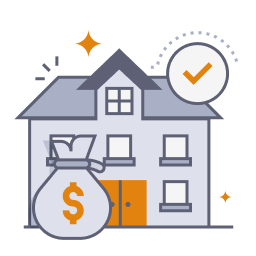Danville, CA Market Stats and Real Estate Trends
In the last few weeks the market has achieved a relative stasis point in terms of sales to inventory. However, inventory is sufficiently low to keep us in the Seller’s Market zone and prices have recently resumed upward pressure.
Serious About Buying or Selling?
These services will help you make an informed decision
Danville Market Action Index (MAI)
Indicator of supply and demand and overall market competitiveness; i.e. whether it's a buyer's or seller's market, or if the market is heating up or cooling off. "How's the market?" by comparing the current rate of sales versus inventory plus additional demand metrics.
- A MAI of around 30 indicates a balanced market, with just enough supply to meet demand.
- A MAI in the low 20s or below is a buyer's market, with more supply than demand and prices declining in the future.
- A MAI of 35 or more points to a seller's market, with demand outpacing supply and prices starting to rise.
- A MAI of 45 or more is a strong seller's market. inventory is very tight, demand is high, and prices are likely climbing.
Median Price
$2,495,000
New Listings Price
$2,258,000
Median SQFT Price
$880
Median Rental Prices
$4,662
Median Home Prices in Danville, CA
Danville Home Prices
Median Price Vs. New Listings Median Price
Median List Price is the median price of homes for sale in the market. It is the most useful, accurate measure of the current market. If you see that the market's Median List Price is climbing today, you'll see sales prices and home values in that market climbing in the future. You can look at Median List Price as a barometer of sellers' current confidence levels, as current individual pricing decisions are based on recent pending and closed transactions.
New Listings median Price
When I price a listing, I have the knowledge of all the recent activity nearby. I know if the house down the street got multiple offers in the first week, and I price the home accordingly
Danville Homes For Sale Inventory
Current Inventory
37 homes
7 Day AvgInventory tells you how many homes are for sale in each market. Watch the inventory count for early indicators that sellers are returning to the market, and how fast. Inventory typically peaks in late June, with a trough in the second week of January. Rising inventory typically favors buyers, while tightening inventory favors sellers.
Danville Homes For Sale Inventory
How Long will It Take To Sell A Home in Danville?
Danville Market Activity
Average Days on Market Vs. Median Days on Market
Average Days On Market
90 Days
7 Day AvgDays on Market (DOM) is a measure of market velocity – how long it takes homes to sell. A non-seasonal increase in DOM could indicate some softness in the market; a drop in DOM points to a market that's heating up.
DOM typically starts falling at the end of March during the peak buying season of April through June, then starts to climb in the second half of the year. However, this seasonal trend can vary depending on the market and the unique seasonal attributes of the area
Look at a couple of years of your market's data to determine what's "normal" for your area in each month
Offers Placed on Danville Homes.
$ Price Decrease
The percent of active listings that have received a price decrease is a measure of demand. In a normal market, we tend to see about 30-35% of sellers initially over-price their homes and eventually reduce the price to attract buyers. Below 30% signals solid demand at prevailing prices, while 40% or more generally indicates reduced demand
price decreases happen more in the fall when it's time to move the listings before the holidays
$ Price Increase
Price increases, on the other hand, are usually under 5%. When you see price increases climbing, it's often a sign of investor activity in a market, iBuyers and flips – or simply very high demand. This is a bullish signal for future sales prices and home values.
Danville Home Sale Offers
Increased Price Percent Vs. Decreased Price Percent
Relisted Inventory for Danville Homes Explained
Relisted Percent For Danville Homes
Percent Relisted points to deals falling through or listings expiring – the percent of homes on the market which we've seen listed, withdrawn and relisted
In a normal market, we typically see Percent Relisted under 10%, and in hot markets it's just a couple percent. Contracts are much less likely to fall through or listings to be withdrawn when the buyers are most active.
Keep an eye on this stat as you're making decisions about buying or selling. As Percent Relisted increases, it tells us that weakening competition is creating opportunity for buyers. If Percent Relisted climbs dramatically, as it did in the summer of 2006, this can be an early signal of a coming market correction. Also remember to run this number for different price segments, as the market for higher-priced homes may behave differently.
| Segment | Median Price | Beds | Baths | Average Sqft | Price/Sqft | Age | DOM |
|---|---|---|---|---|---|---|---|
| Top 25% | $4,665,385 | 5 | 5 | 5,259 | $930 | 23 | 123 |
| Upper 25% | $2,798,815 | 4 | 3 | 3,477 | $817 | 36 | 44 |
| Lower 25% | $2,052,308 | 4 | 3 | 2,747 | $752 | 38 | 33 |
| Bottom 25% | $1,654,715 | 3 | 2 | 2,023 | $818 | 44 | 41 |
Stay Informed About Danville Real Estate Market
Get the latest updates on market trends, pricing, and more delivered straight to your inbox.


